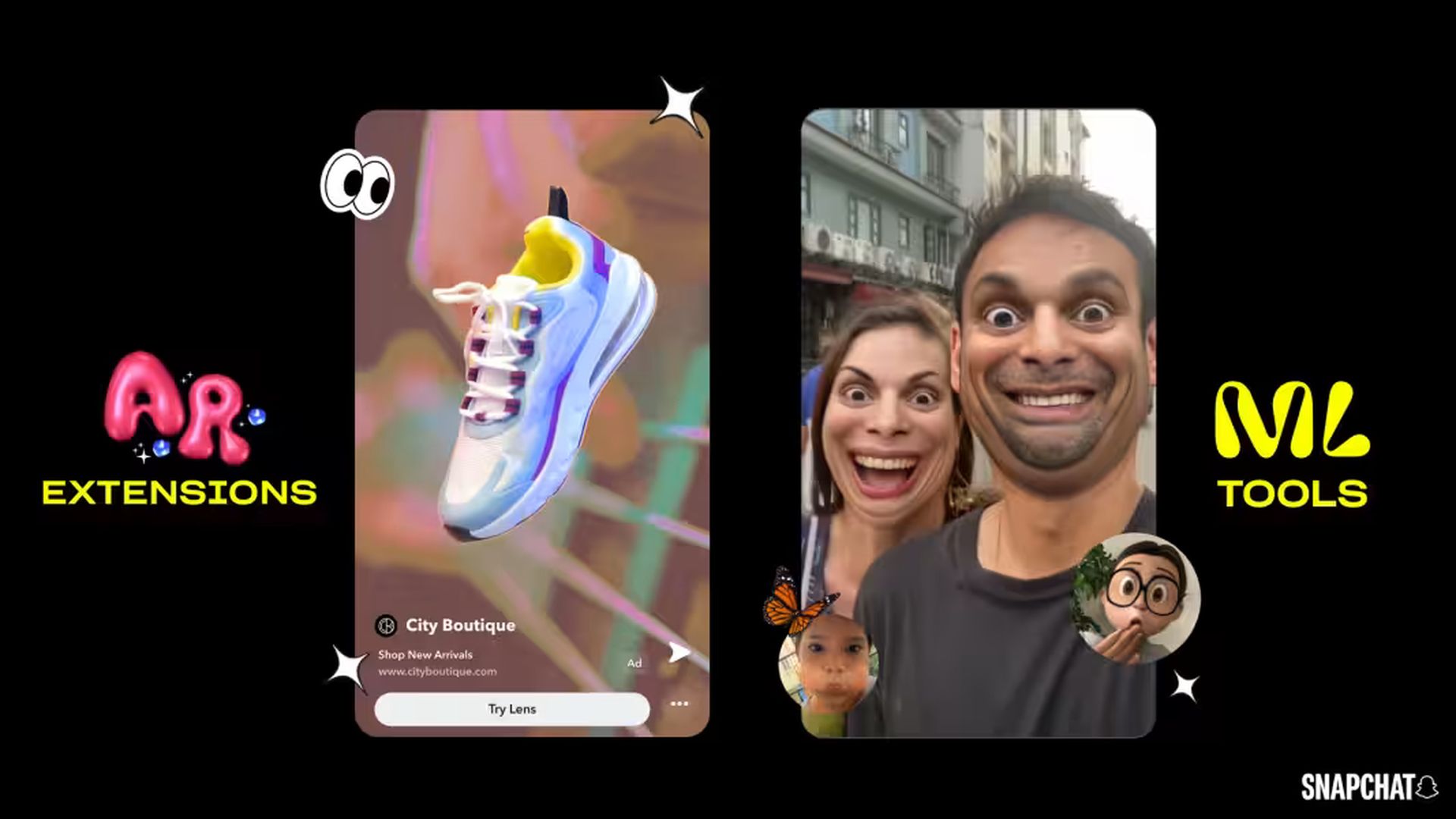Snapchat ups the ante in interactive advertising

The constant development of chatbots continues to enhance our social media experiences. Snapchat, which was once installed on every phone, has now evolved into an application targeting brands and has been working on AI try-on technology for a long time. It seems that Snapchat has reached the final point in this regard.
Snapchat unveiled a suite of new augmented reality (AR) and machine learning (ML) tools during the 2024 IAB NewFronts event. These tools target brands and advertisers, aiming to empower them to create more engaging experiences for Snapchat users.
This announcement comes after a period of significant investment by Snapchat in AR technology. The company has been a leader in the AR space for social media, pioneering features like facial lenses that users can add to their snaps.
Snapchat enhances AR try-on experiencesOne of the key highlights of the new toolset is the focus on simplifying AR try-on experiences. Snapchat has acknowledged the potential of AR for product visualization and has been working with major brands like Amazon and Tiffany & Co. to allow users to virtually try on products within the app.
The new AR try-on tools leverage automation and machine learning to streamline the creation process for brands. This signifies a reduction in the time and resources required to transform a brand’s 2D product catalog into an immersive 3D try-on experience for Snapchat users.
 Brands can use generative AI to create custom Lenses with a text or image prompt (Image credit)
Creativity at new heights with generative AI
Brands can use generative AI to create custom Lenses with a text or image prompt (Image credit)
Creativity at new heights with generative AI
Another exciting addition is the introduction of ML Face Effects. This feature allows brands to tap into the power of generative AI technology to create custom Lenses with just a text or image prompt. This prompt can be anything from a specific product design to a mascot or brand character.
The AI then generates a unique ML model that can be used to create realistic face effects for a Lens. These AR Lenses can then be incorporated into ad campaigns on Snapchat, offering a novel way for brands to showcase their products and connect with Snapchat’s user base.
Ready to party like it’s 1999? Our 90s AI Lens throws it back to the decade of denim on denim and all plaid everything. See what you and your friends look like decked out in the decade's best trends: https://t.co/ckNt5am853 pic.twitter.com/MwSArVBe5z
— Snapchat (@Snapchat) April 26, 2024
Integration across ad formatsSnapchat is also introducing AR Extensions, a feature designed to offer advertisers more flexibility in incorporating AR elements into their campaigns. AR Extensions allow advertisers to seamlessly integrate AR Lenses and filters directly into various ad formats on the platform.
This includes popular formats like Snap Ads, Dynamic Product Ads, Collection Ads, Commercials, and Spotlight Ads. With AR Extensions, brands can create a unified AR experience across their entire Snapchat advertising strategy.
This focus on comprehensive AR integration across ad formats suggests that Snapchat is aiming to establish itself as a leader in AR advertising. It will be interesting to see how brands leverage these new tools to create interactive and engaging ad experiences for Snapchat users.
Is this the future of social media advertising?While it’s still early to say definitively, Snapchat’s investment in AR and ML tools for advertisers could signal a shift in the way social media advertising is approached. By offering interactive and immersive experiences, AR advertising has the potential to grab user attention more effectively compared to traditional static ads.
The success of these new tools will likely depend on several factors, including user adoption of AR experiences within Snapchat and the creativity with which brands leverage these tools to develop engaging ad campaigns. Regardless, Snapchat’s move is a noteworthy development in the social media advertising landscape, and it will be intriguing to see how it plays out in the coming months.
This focus on AR advertising also raises questions about how other social media platforms might respond. It’s possible that Snapchat’s initiative could spark a trend towards more interactive and immersive advertising experiences across all the social media platforms.
Featured image credit: rawpixel.com/Freepik
